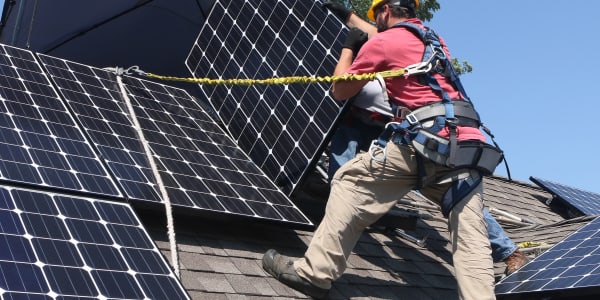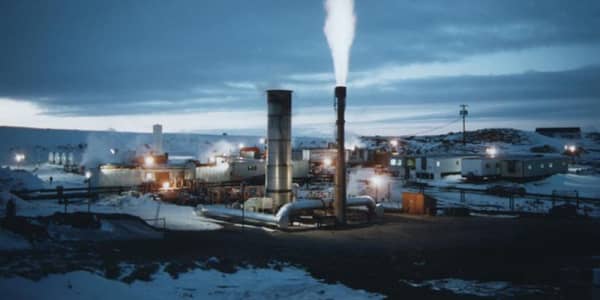Fossil fuel reserves are declining, sun and wind power are imperfect, and the world is looking for answers. But there's a possible solution out there: recycling energy from secondary sources.
Energy "harvesting"—where incidental energy like radio waves, heat and vibrations are harnessed for power—is not a new concept, but the technology to support the idea is getting better. Just as today the kinetic force of a swinging arm can power a wristwatch, some technologists are betting that in the future pedestrians' footsteps can light a city.
Much of energy harvesting's promise lies in manufacturing, where so much energy is lost to the heat, sound and vibrations of machinery. If even a small percentage of that could be captured and reused, then companies could realize significant cost savings—or so the theory goes.
While manufacturers in energy-hungry Europe are already looking to invest in the technology, many American firms are less quick to see the promise in harvesting, experts said.
Read MoreEnergy in 25 years: Who's producing, who's buying
One U.S.-based company, Echogen, which helps convert industrial waste heat into usable power, says it gets more uptake outside the United States than in it.
"We're fortunate in the U.S. here to have abundant sources of energy, and the shale gas explosion has given us some (energy security)," said Echogen CEO Philip Brennan. "What you're saving is less significant in the U.S. than elsewhere in the world."
Brennan said that Scandinavian countries are already seeking to use "every thermal unit possible," but that he expects the United States will ultimately come around to the technology. Energy costs are sure to rise over the long term, he said, and the U.S. "shield won't last forever."
This is not to say, however, that American firms are completely ignoring the potential of energy harvesting. Amazon reportedly plans to use waste power from a nearby data center to heat its new Seattle campus. It's thought to be the first project of its kind in the country, according to The Seattle Times.

Still, some warn that it's important not to overstate the benefits of energy harvesting: Vastly more significant changes to the country's energy efficiency could come from, say, retooling America's power grid, said Cheryl Martin, acting director of Advanced Research Projects Agency-Energy.
ARPA-E, which invests in "disruptive ideas to create America's future energy technologies," sees a grid overhaul as one of the most significant developments that will happen in the next 25 years, Martin said. Localizing energy storage to counteract "the decapitating effect" of a downed power plant is important to securing America's infrastructure, she explained, but hyperlocalized energy harvesting is not necessarily a top priority.
Read MoreOpportunity fuels heat recovery systems
"How do you harness all these small sources of energy and have them be impactful?" Martin asked. "Today I don't see anything doing that, but I would never say never."
One way to make harvesting worthwhile is to use it for low-energy devices, said Dave Freeman, chief technology officer of power management at Texas Instruments. In fact, TI—famous for, among other things, pioneering the solar calculator—is developing energy harvesting technologies with the future in mind.

The often-predicted "Internet of Things," which will supposedly connect consumer devices and appliances into a single network, will require hundreds of wireless microsensors in order to function. All of them will need to be powered somehow. Such technology could use batteries (which need periodic replacement), but it would be more cost- and time-efficient to have it generate its own energy, Freeman explained.
Read MoreNew crop of technologies harvests lost energy
TI plans to power an Internet of Things with devices that can harvest heat, light and vibration energy from the environment. Those technologies are not particularly efficient now, Freeman said, but the next 10 to 15 years will see major strides in their ability to capture power from their environment.
Industry also has a need for self-powered wireless sensors, Freeman said. Such devices would be able to monitor hard-to-reach areas within machines.
Still, like ARPA-E's Martin, Freeman emphasized that the most important technological strides will come from efficient energy storage and use—not collection.
One company, though, is looking to take energy harvesting to the big leagues: Pavegen produces floor tiles that harness pedestrians' footsteps to power nearby lights, but has "grand visions" to lead the charge in collecting every kind of environmental energy, according to founder and CEO Laurence Kemball-Cook.
"We see ourselves as being what a processor was to a PC," he said.
Using the kinetic energy of footsteps, Pavegen powers lighting in a corridor of Heathrow Airport and a soccer field in a Rio de Janeiro favela.
Read MoreThese companies are the greenest in the world
Kemball-Cook said he hopes his technology will be helping to power cities in 25 years by harnessing the swaying of buildings and the vibrations of sound.
"Every single building could be a power plant," he said.





